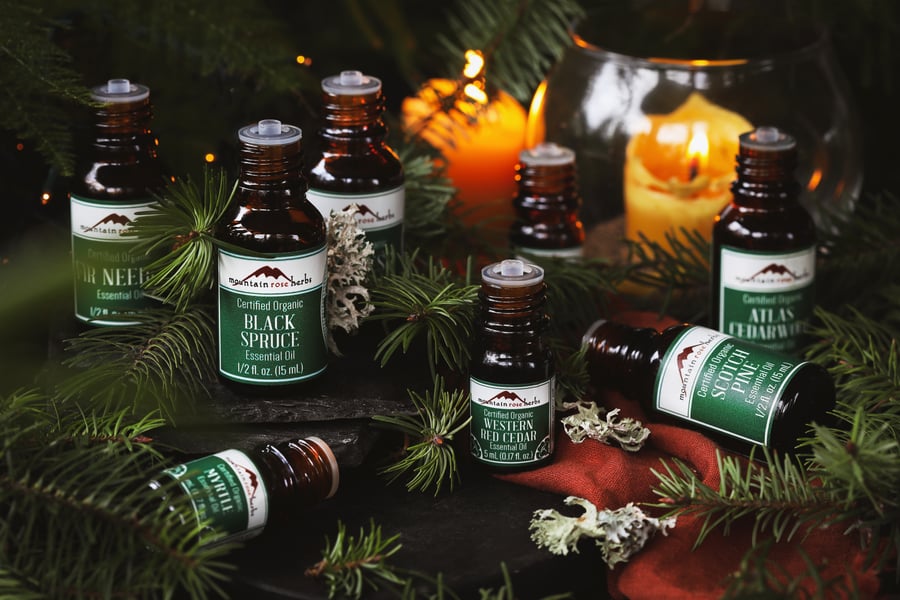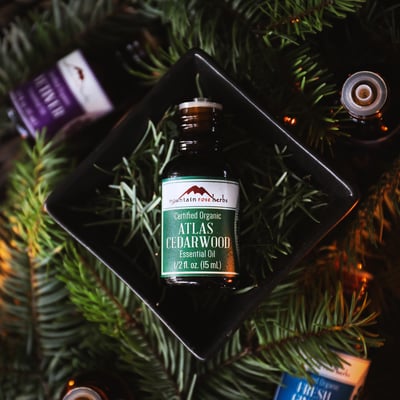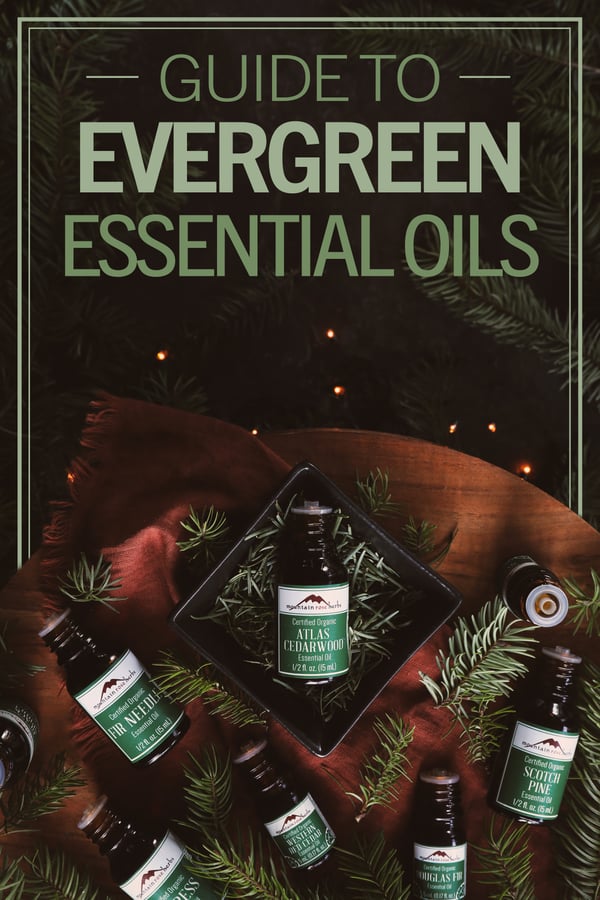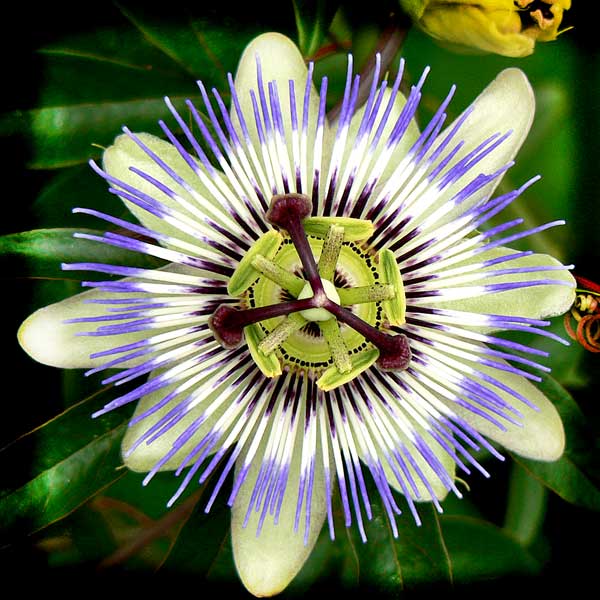
Many of us associate certain smells with the holiday season—from the sweet smells of spiced cookies to minty diffuser blends, to the most characteristic winter aroma: evergreens! Even for those who don’t celebrate Christmas, the bright woodland scents are welcomed by many this time of year. One of the questions most often asked of Mountain Rose Herbs this time of year is the difference between evergreen essential oils. We pride ourselves on our wide selection of organic essential oils, but so many options can make it harder to choose.
So I took to my notebook and started down a journey of woodland bliss to share some of the differences between our evergreen essential oils.
Black Spruce (Picea mariana)
Also known as black pine, black spruce is a middle note essential oil that is reminiscent of traditional “Christmas trees,” but with a sharper, more astringent note than the other commonly used holiday oil, grand fir. The oil is fresh, crisp, and pungent with some subtle warm, sweet, and balsamic notes.
Blends well with cedarwood, Douglas fir, spearmint, vetiver, lavender, ylang ylang, bergamot, and geranium.
Cedarwood, Atlas (Cedrus atlantica)
One of our most popular evergreen essential oils, Atlas cedarwood is a base note that is earthy, with a touch of sweetness. This earthy oil is deep and complex. It has a rich, musty earthiness that evokes the scent of evergreen needle duff in the heart of the deep woods.
Blends well with lavender, juniper, patchouli, rosemary, vetiver, cypress, and ylang ylang.
Cedarwood, Virginia (Juniperus virginiana)
Also known as eastern red cedar, this base note essential oil is woody and warm with comforting undertones. This oil has a high, sweet note and is a bit less musty than Atlas Cedarwood.
Blends well with benzoin, cypress, juniper, patchouli, rose, vetiver, Peru balsam, and ginger.
Cypress (Cupressus sempervirens)
This middle note oil smells like a beautiful harmony of the earthy Atlas cedarwood, the sweetness of grand fir, and the cleanliness of spruces. The oil is often used for focus and intentional breathwork.
Blends well with cedarwood, black pepper, lemon, pine, ginger, and benzoin.
Douglas Fir (Pseudotsuga menziesii)
Douglas Fir is a middle note essential oil with a refreshing aroma of coniferous trees and soft balsamic notes. It is a great oil for purification and is often used in natural cleaning products and soaps.
Blends well with cistus, fir needle, grand fir, orange, rosemary, and lemon.
Fir Needle (Abies balsamea)
This top note essential oil uplifts the spirit and helps bring about a sense of ease. This pine species is most recognized as a Christmas tree in North America and is often used in holiday diffuser blends, candles, and more. Blends well with spruce, lemon, peppermint, rosemary, and thyme.
Grand Fir (Abies grandis)
This is a middle note essential oil that has a fresh, green, and coniferous aroma most often used during the holidays, though it is wonderful all year around. Our Customer Service team often recommends this oil for those wanting to make holiday aroma blends.
Blends well with bergamot, clary sage, lemon, rosemary, benzoin, pine, marjoram, and ginger.
Myrtle (Myrtus communis)
This top/middle note essential oil has a fresh, sweet, and camphorous aroma that adds a pop of brightness to aromatherapy blends. Myrtle is commonly used as a symbol of love.
Blends well with clove, black pepper, bay laurel, ginger, bergamot, and rosemary.
Scotch Pine (Pinus sylvestris)
This base note oil has a dry-balsamic aroma with turpentine-like notes. It is often used for DIY cleaning recipes.
Blends well with bergamot, cedarwood, clary sage, cypress, frankincense, rosemary, sage, sandalwood, and thyme.
Western Red Cedar (Thuja plicata)
One of the most popular oils in the essential oil market, western red cedar has many physical and spiritual uses. The oil has a strong, fresh-green aroma with sharp musk and wood undertones.
Blends well with black pepper, cedarwood, citrus, ginger, and sandalwood.














